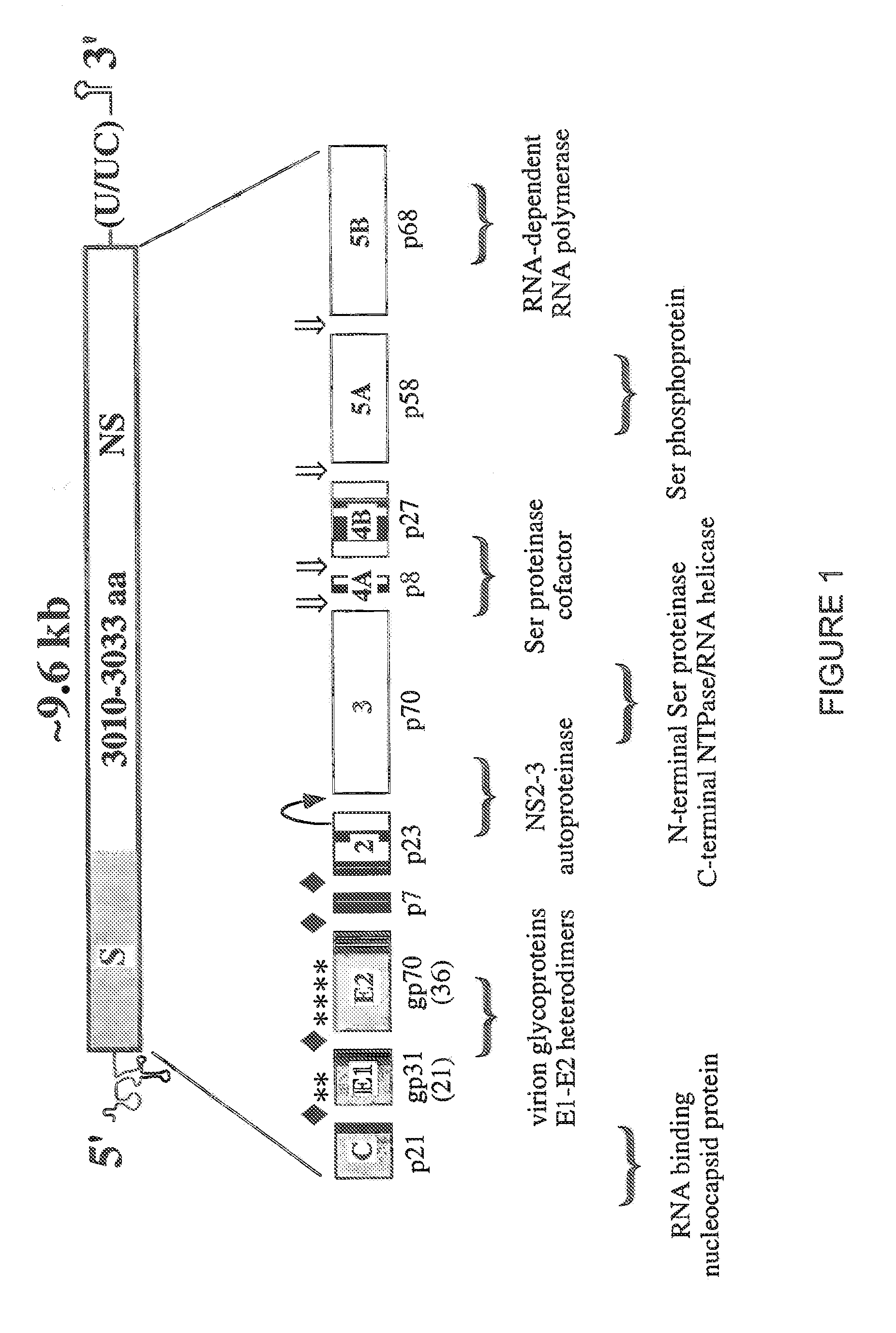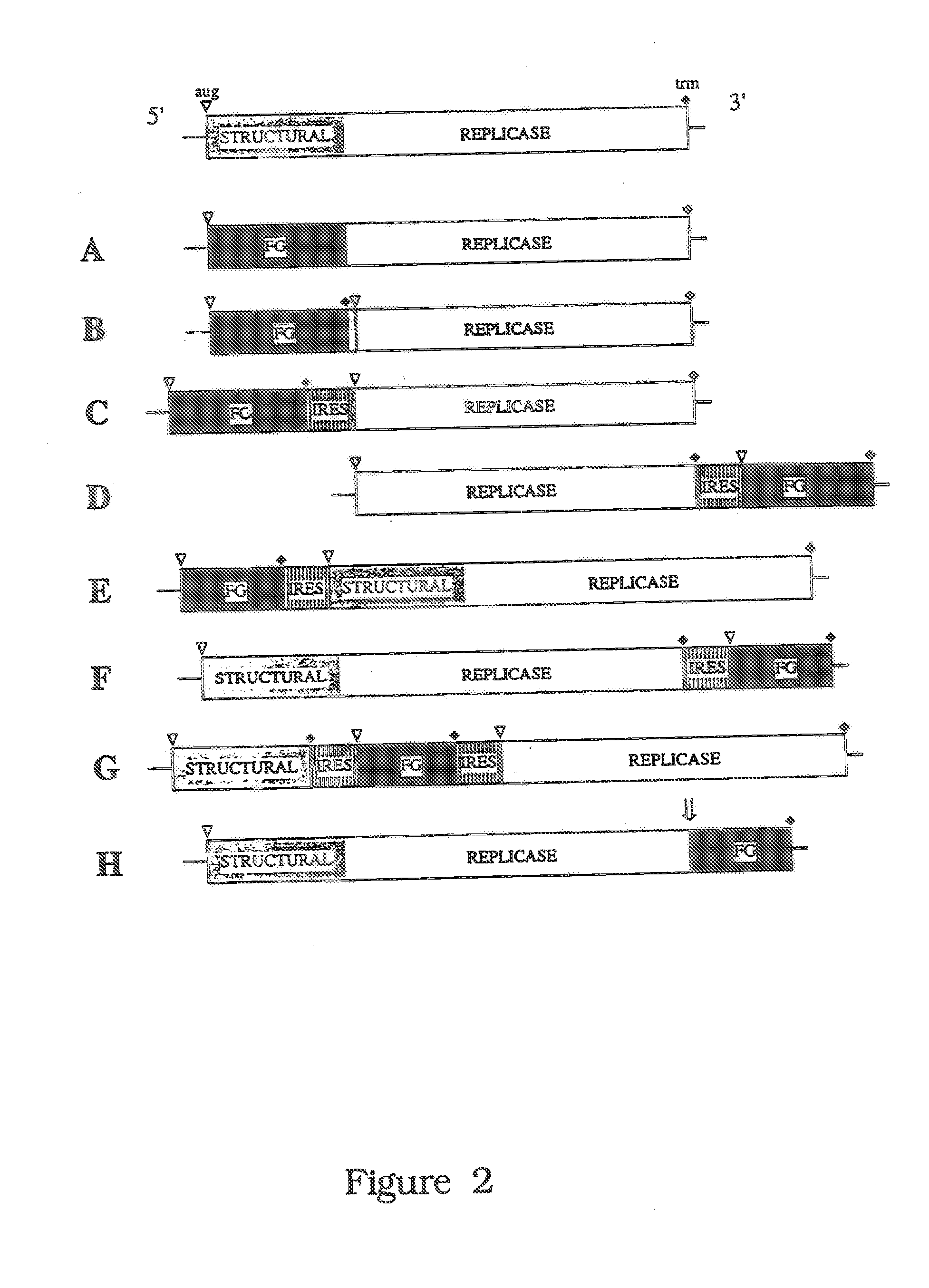HCV Variants and Related Methods
- Summary
- Abstract
- Description
- Claims
- Application Information
AI Technical Summary
Benefits of technology
Problems solved by technology
Method used
Image
Examples
Example
EXAMPLE 1
[0194]This example describes the production and evaluation of replicons comprising a neo selectable marker and a polyprotein coding region encoding subtype 1b nonstructural proteins.
Materials and Methods
[0195]Cell lines. The Huh7 cell lines were generously provided by Robert Lanford (Southwest Foundation for Biomedical Research, San Antonio, U.S.A.) and Ralf Bartenschlager (Johannes Gutenberg University Mainz, Mainz, Germany) and maintained in Dulbecco's modified minimal essential media (DMEM; Gibco-BRL) supplemented with 10% fetal calf serum (FCS), and nonessential amino acids.
[0196]Assembly of a selectable subtype 1b replicon. An HCV subtype 1b replicon was constructed which is similar to the replicon described in Lohmann et al., Science 285:110-113 (1999). For that construction, a step-wise PCR-based assay utilizing KlenTaqLA DNA polymerase (Wayne Barnes, Washington University) was developed. cDNAs spanning 600-750 bases in length were assembled from 10-12 gel-purified o...
Example
EXAMPLE 2
[0207]This example describes the production of cell lines permissive for HCV replication; a replicon comprising the NS2 coding region; and full-length HCV cDNA clones comprising the Ser to IIe substitution at position 1179 of SEQ ID NO:3.
[0208]Generation of cell lines. As shown in the previous example, G418-resistant cell clones harboring persistently replicating HCV RNAs were isolated. Two of these G418-resistant cell clones were treated extensively with the antiviral, interferon-α, to obtain 2 cell lines void of HCV RNA. These are refered to as interferon-treated cell lines I and II.
[0209]HCVrep1bBartMan / AvaII, HCV adaptive replicon I or HCV adaptive replicon VII were transfected into the interferon-treated cell lines, I and II. This resulted in a greater G418 transduction efficiency than that observed for the parental Huh-7 cells (see Table 1). Early post-transfection HCV RNA amplification was greatest for the IFN-treated cell line. These results indicate that the cell l...
PUM
| Property | Measurement | Unit |
|---|---|---|
| Fraction | aaaaa | aaaaa |
| Fraction | aaaaa | aaaaa |
| Fraction | aaaaa | aaaaa |
Abstract
Description
Claims
Application Information
 Login to View More
Login to View More - R&D
- Intellectual Property
- Life Sciences
- Materials
- Tech Scout
- Unparalleled Data Quality
- Higher Quality Content
- 60% Fewer Hallucinations
Browse by: Latest US Patents, China's latest patents, Technical Efficacy Thesaurus, Application Domain, Technology Topic, Popular Technical Reports.
© 2025 PatSnap. All rights reserved.Legal|Privacy policy|Modern Slavery Act Transparency Statement|Sitemap|About US| Contact US: help@patsnap.com



